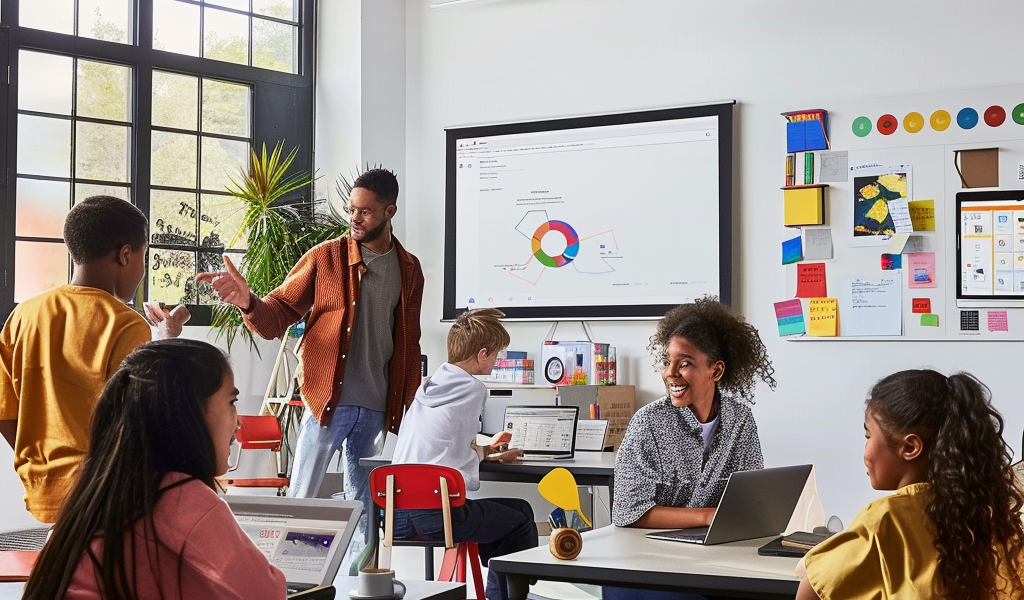As the back-to-school season approaches, excitement and a hint of stress fill the air for students, educators, and parents alike. This year, Google has unveiled a suite of innovative AI tools designed to enhance learning experiences and streamline educational tasks. With a focus on privacy and personalization, these features aim to empower students and educators to make the most of the academic year.
AI Tools for Students
Google’s new AI capabilities are specifically tailored for students, especially those aged 18 and older, to facilitate deeper understanding and personalized learning. One of the standout features is the ability to chat with Gemini, Google’s advanced AI model, using school-issued Google accounts. Educational institutions have expressed concerns about privacy, and Google is addressing these by ensuring that user data is not utilized for AI training or improvement. This commitment to privacy reassures students and educators that their interactions remain confidential.
In the coming months, Google plans to expand Gemini’s availability to include teen students, following careful considerations to ensure a safe and responsible implementation in classroom environments. This move reflects Google’s dedication to providing educational tools that are both effective and secure.
Smarter Studying with Gemini
Gemini has received several updates aimed at enhancing the study experience. Users can now access responses from OpenStax textbooks, a popular resource among students, and enjoy more interactive practice opportunities. For those using Gemini Advanced, an exciting feature allows users to upload documents and pose questions about them. The newly introduced Learning Coach, named Gem, offers personalized study guidance, tailoring recommendations to individual learning styles and needs.
Enhancing Learning with YouTube
YouTube has become an invaluable resource for academic learning, and Google is taking it a step further. When students watch educational videos, they can now see relevant definitions of key concepts directly on the video page. Additionally, a new conversational AI tool allows users to engage with the content more interactively. Students can ‘raise their hand’ while watching a video to ask clarifying questions, seek helpful explanations, or even take quizzes to test their understanding.
Making Materials More Accessible with NotebookLM
NotebookLM is another powerful tool designed for users aged 18 and older, transforming the way students take notes and conduct research. With advanced summarization features and chat functionality, users can convert raw information into actionable insights. A notable enhancement allows users to upload image-based PDFs, such as handwritten notes or visual diagrams, in addition to traditional formats like Docs and Slides. This versatility makes it easier for students to organize and understand their materials.
Learning with Google Lens
Google Lens continues to be a game-changer for students facing challenging homework problems. By simply taking a photo of a math, history, or science question using the Google app, students can receive step-by-step assistance, empowering them to learn how to solve problems independently. For those attending virtual lectures, Google Lens has been integrated into the Chrome desktop, allowing users to capture equations or diagrams presented during classes and gain further insights.
AI Tools for Educators and Parents
Google’s commitment to enhancing the educational experience extends beyond students. Educators and parents can also benefit from these AI tools, which help streamline administrative tasks and facilitate communication. With features designed to simplify lesson planning and student engagement, teachers can focus more on delivering impactful lessons and less on logistical challenges.
Moreover, parents can utilize these tools to stay informed about their children’s educational journey. By accessing updates and resources through Google Workspace for Education, they can support their children’s learning at home and foster a collaborative environment that encourages academic success.
Conclusion
As students, educators, and parents gear up for the new school year, Google’s array of AI features promises to make the back-to-school experience smoother and more productive. With a focus on privacy, personalization, and accessibility, these tools are set to revolutionize the way education is approached in the digital age.





